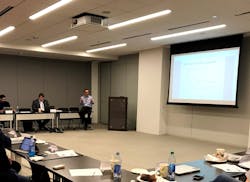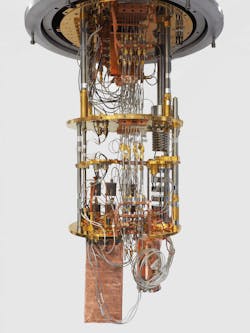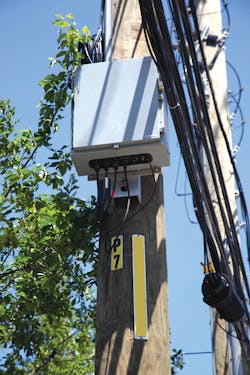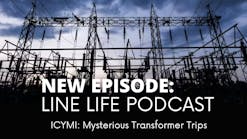Deploying the more sustainable and resilient electric grid of the future requires a sophisticated usage of data. This begins with sensors and measurement infrastructure collecting a wide range of grid-relevant data, but also includes various forms of analytics to use the data to solve a wide range of grid problems. Many advanced analytics methods already are being used, including artificial intelligence and machine learning. Now, forward-looking electric utilities are exploring the next step in enhancing these analytics, by understanding how emerging computing technologies can be leveraged to provide higher levels of service. Among the most compelling examples of this is the potential use of quantum computing for grid purposes.
This rapid evolution is happening in part to accommodate additional distributed energy resources (DERs) on the grid, including the solar photovoltaic (PV) and energy storage that help to reduce emissions by limiting the need for fossil-fuel power plants. High levels of DER penetration not only necessitate reform in traditional grid planning and operation, but also facilitate unprecedented grid modernization to accommodate new types of loads (for example, electric vehicles) and bidirectional power transfer.
Electric utilities like Commonwealth Edison (ComEd) are in a unique position to develop and deploy grid-optimizing technologies to meet the demands of evolving systems and build a scalable model for the grid of the future. Serving over 4 million customers in northern Illinois and Chicago, Illinois, U.S., ComEd is partnering with leading academic institutions — including the University of Denver and the University of Chicago — and leveraging its position as one of the largest electric utilities in the U.S. to explore quantum computing applications for grid purposes.
What Is Quantum Computing?
The major difference between classical and quantum computers is in the way they process information. Whereas classical computing bits are either 0 or 1, quantum bits (qubits) can be both 0 and 1 at the same time through a unique quantum property called superposition. For example, an electron can be used as a qubit because it can simultaneously occupy its ground state (0) and its excited state (1).
Moreover, this superposition phenomenon scales exponentially. For example, two qubits can occupy four states simultaneously: 00, 01, 10 and 11. More generally, N qubits can represent an exponential number of states (2N) at once, enabling a quantum computer to process all these states rapidly. This exponential advantage is the salient feature of quantum computers, enabling faster calculations in specific applications, such as factoring large numbers and searching data sets.
Quantum Computing Applications
To identify potential applications for quantum computing in the grid of the future, ComEd cohosted a workshop on Feb. 27, 2020, with researchers from the University of Chicago, the University of Denver and Argonne National Laboratory. The purpose of the workshop was to explore the potential benefits quantum computing could bring to power systems and collaborate on developing technologies that could be demonstrated to provide this value.
Recognizing these two fields historically have not been in close contact, the workshop began with two tutorial sessions, one for power systems and another for quantum computing, to provide background on the state of the art of the respective fields as well as the emerging challenges of each. Following the tutorial sessions, a technical discussion included brainstorming potential applications of existing quantum computing algorithms on large-scale power system problems requiring heavy computational resources. Following are several potential power systems applications of quantum computing in deploying the grid of the future.
Unit Commitment
Optimal system scheduling — in particular, unit commitment (UC) — is one of the most computationally intensive problems in power systems. UC is a nonlinear, nonconvex optimization problem with a multitude of binary and continuous variables. There have been extensive and continuous efforts to improve the solution to this problem, from both optimality and execution time points of view. Recent advances in power systems, such as the integration of variable renewable energy resources and a growing number of customer-owned generation units, add another level of difficulty to this problem and make it even harder to solve.
Quantum optimization may solve the UC problem faster than current models used in classical computers. The quantum approximate optimization algorithm (QAOA), an algorithm for quantum computers designed to solve complex combinatorial problems, may be well suited for the UC problem. While QAOA was designed for discrete combinatorial optimization, several interesting research directions could relax the algorithm to be compatible with mixed-integer programming tasks used in UC.
Contingency Analysis
Another potential application involves contingency analysis. Traditional power system operators tend to assess system reliability by analyzing N-1 contingency, to ensure the system can maintain adequate power flow during one-at-a-time equipment outages. System operators usually run this study after obtaining a state estimator solution to determine whether system status is still within the acceptable operating condition.
The high-risk N-k contingency has been introduced to obtain better situational awareness. However, the combinatorial explosion in potential scenarios greatly challenges the existing computing power. Quantum computers could help to address N-k scenarios by enabling access to an exponentially expanded state space.
State Estimation
Quantum computing also has the potential to enable large-scale distribution system hybrid state estimation with phasor measurement units (PMUs) and advanced metering infrastructure (AMI). Utilities already have deployed thousands of PMUs and millions of smart meters across the grid that provide data to a central management system. PMUs provide time-synchronized three-phase voltage and current measurements at speeds up to 60 samples per second, which allow for linear state estimation at similar speeds. AMI provides voltage and energy measurements at customer sites with different time resolutions.
As the system becomes more complex, the computation required to use many measurements estimating the states of a practical network increases accordingly. QAOA provides a promising path for state estimation with PMUs or hybrid state estimation with both PMUs and AMI at a speed believed to be unachievable by classical computers. In addition, QAOA is within the computing capabilities of near-term quantum computers, called noisy intermediate-scale quantum (NISQ), now available.
Accurate Forecasting
When it comes to system operation, forecasting is another issue quantum computing could address. The high volatility of DERs, such as solar and wind, may disturb normal system operation and undermine the system’s reliability. Accurate forecasting of variable generation would enable system operators to act proactively to avoid potential system frequency disturbances and stability concerns.
Quantum computing could make it possible to consider a broader range of data for forecasting (such as detailed weather projections and trends) and achieve a much more accurate forecast. The workshop identified Boltzmann as a potentially effective method to tackle this problem. In particular, the quantum Boltzmann machine (QBM) is a model that has significantly greater representational power than traditional Boltzmann machines. QBMs already have been experimentally realized on currently available quantum computers.
Addressing Uncertainties
An inherent part of modern power grids is the uncertainty stemming from various sources (such as variable generation, component failures, customer behavior, extreme weather and natural disasters). Uncertainties cannot be controlled by grid operators, so the common practice is to define potential scenarios and plan for them accordingly. However, these scenarios can be significant in some cases, making it extremely challenging to devise a viable plan for grid operation and asset management.
Quantum computers’ capability to solve numerous scenarios simultaneously could be useful in addressing uncertainty in power systems. Quantum algorithms under development by financial firms also may be directly translatable to addressing uncertainties in power grids.
Studying These Applications
As part of the broader collaboration, the University of Denver team has been awarded a grant to study some of the applications of quantum computing in power grids. Awarded by the Colorado Office of Economic Development & International Trade, the grant aims to explore quantum computing-enhanced security and sustainability for next-generation smart grids. In particular, the team will investigate the quantum solution of the power flow problem as the most fundamental computational analysis in power systems.
The workshop also identified that practical applications of quantum computing may soon be possible thanks to the development of quantum hardware. In 2019, Google conducted a quantum supremacy experiment by running a simple program on a small quantum computer in seconds that would have taken days on the world’s largest supercomputer. IBM recently released a technology road map in which machines will double in size over the next few years, with a target of over 1000 quantum bits by 2023 — which likely would be large enough for many of the potential power grid applications.
A Quantum Leap
The 2020 workshop that ComEd, the University of Chicago and the University of Denver engaged in has only scratched the surface of quantum computing as a new paradigm to solve complex energy system issues. However, this first step presents a path toward understanding the capabilities of quantum computing and the role it can play in optimizing energy systems. That path toward understanding is best taken together, as academics and engineers, government and institutions, and utilities collaborate to share knowledge to build the electric grid of the future.
ComEd and the two universities have sustained a bimonthly collaboration since the workshop to explore power systems applications of quantum computing. Some preliminary results on quantum computing approaches to the UC problem were presented by the University of Chicago in the IEEE 2020 Quantum Week. As this collaboration develops, it becomes increasingly likely the next generation of grid technologies will engage the quantum possibilities of ones, zeros and everything in between.
Honghao Zheng ([email protected]) is a principal quantitative engineer in smart grid emerging technology at Commonwealth Edison (ComEd), where he supports new technology ideation, industrial research and development, and complex project execution. Prior to ComEd, he worked as a technical lead of Spectrum Power Operator Training Simulator and Transmission Network Applications modules for Siemens DG SWS. Zheng received his Ph.D. in electrical engineering from the University of Wisconsin-Madison in 2015.
Ryan Burg ([email protected]) is a principal business analyst in smart grid programs at ComEd, where he supports academic partnerships. He previously taught sustainable management and business ethics at Bucknell, HSE and Georgetown Universities. Burg holds a joint Ph.D. in sociology and business ethics from the Wharton School of Business of the University of Pennsylvania.
Aleksi Paaso ([email protected]) is director of distribution planning, smart grid and innovation at ComEd, where he is responsible for distribution planning activities, distributed energy resource (DER) interconnection, and smart grid strategy and project execution. He is a senior member of the IEEE and technical co-chair for the 2020 IEEE PES Transmission & Distribution Conference and Exposition. He holds a Ph.D. in electrical engineering from the University of Kentucky.
Rozhin Eskandarpour ([email protected]) is a senior research associate in the electrical and computer engineering department at the University of Denver. Her expertise spans the areas of quantum computing and artificial intelligence applications in enhancing power system resilience. She also is the CEO and founder of Resilient Entanglement LLC, a Colorado-based R&D company focusing on quantum grid. She is a senior member of the IEEE society. Rozhin holds a Ph.D. degree in electrical and computer engineering from the University of Denver.
Amin Khodaei ([email protected]) is a professor of electrical and computer engineering at the University of Denver and the founder of PLUG LLC, an energy consulting firm. He holds a Ph.D. degree in electrical engineering from the Illinois Institute of Technology. Dr. Khodaei has authored more than 170 technical articles on various topics in power systems, including the design of the grid of the future in the era of distributed resources.
Pranav Gokhale ([email protected]) is cofounder and CEO of Super.tech, a quantum software start-up. He recently defended his Ph.D. in computer science from the University of Chicago (UChicago), where he focused on bridging the gap from near-term quantum hardware to practical applications. Gokhale’s Ph.D. research led to over a dozen publications, three best paper awards and two patent applications. Prior to UChicago, he studied computer science and physics at Princeton University.
Frederic T. Chong ([email protected]) is the Seymour Goodman Professor in the department of computer science at the University of Chicago. He also is lead principal investigator for the Enabling Practical-scale Quantum Computing (EPiQC) project, a National Science Foundation (NSF) Expedition in Computing. Chong received his Ph.D. from MIT in 1996. He is a recipient of the NSF CAREER award, the Intel Outstanding Researcher Award and nine best paper awards.






